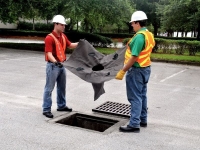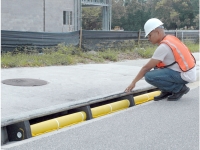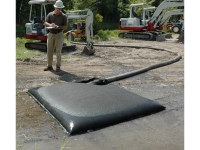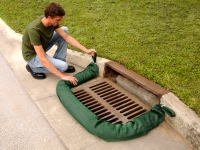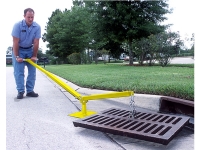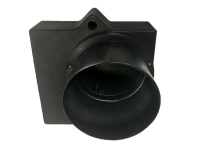Stormwater Management
Stormwater Management Products for Drainage & Flood Prevention
Additional Information
What Is Stormwater Management?
Stormwater management is an attempt to deal with the runoff from rainfall or melted snow.
The aim is to reduce runoff in urban areas to minimize the impact that the stormwater could have if left unmanaged. In the natural hydrologic cycle, stormwater seeps into the soil, aquifers, and other areas by passing through the surface of the ground.
Urban areas, however, have high levels of impervious surfaces such as roads and driveways. These prevent stormwater from penetrating the ground and lead to increased runoff. Stormwater management is an attempt to try to redress this balance by using various techniques to allow the hydrologic cycle to work as it should.
In September 2019, six tropical storms formed off the coast of the US. This was a modern record.
Severe weather can cause damage to property and endanger life, but it's not just the high winds that are an issue.
The sheer amount of rainfall that accompanies storms can also cause havoc with the local environment.
Read on as we take a closer look at why stormwater management is more important than ever.
Why Is Stormwater Management Important?
Stormwater management is important for a number of different reasons. These reasons affect both the residents and the environment of urban areas.
Reduces the Risk of Flooding
The high proportion of impervious surfaces in urban areas means that stormwater has far less opportunity to drain away naturally. This vastly increases the risk of flooding.
Without proper stormwater management, urban areas are highly likely to see flooding during times of heavy rain or melting snow. This flooding can cause severe damage to property, and can even be a risk to life.
Stormwater control Preventing Erosion
Some of the water that cannot penetrate impervious surfaces will eventually runoff into streams.
The increased amount of water flowing through these streams can cause severe erosion of the banks and beds. This disrupts the stream's natural ability to convey water and sediment.
Too much stormwater flowing into streams can also cause them to burst their banks. This causes more flooding and can potentially damage property or crops.
As well as destroying crops, poorly managed stormwater can also run off into agricultural land and cause soil erosion, washing away the rich topsoil needed for successful yields.
Protects Water Quality
Another problem with the impervious surfaces of urban areas is that other liquids cannot penetrate them either.
Oil, gasoline, plastics, and pesticides can build up on hard surfaces. Without good stormwater management, during heavy rainfall, these contaminants are picked up by the runoff and carried into other water sources, such as streams and lakes, where they cause pollution.
Some of these sources of water, such as groundwater, may provide drinking water for urban areas, so this kind of pollution can be very harmful.
Reduces the Risk of Infrastructure Damage
Stormwater that is poorly managed can cause damage to farms, businesses, and private property, but may also damage urban infrastructure.
Damage to roads, electrical infrastructure, and even sewer systems can have a big impact on local communities. There will also be financial implications in terms of the repairs that need to be made.
Maintains the Natural Cycle
Proper stormwater management allows the hydrologic cycle to return to a more natural state, with excess water able to seep into the ground or naturally run off into ponds or lakes.
Maintaining this natural cycle is vital for local plant and animal life.
What Techniques Are Used in Stormwater Management?
Managing stormwater is a tough job. The good news is that there is plenty of equipment out there to help you manage stormwater.
Drain Covers
As we have already seen, stormwater that passes over roads, driveways, and buildings can pick up contaminants.
If this contaminated water makes its way into the water systems, it can lead to pollution. In the event of a storm, covering drains with drain covers will prevent the contaminated water from entering the drainage system.
Drain Guards
If the flow of stormwater is going to be high, you may not want to prevent it from passing into drains, for risk of flooding.
In this case, a drain guard is a better solution. This is a fabric filter that fits inside a drain, beneath the grating. Stormwater can still flow into the drain, but the fabric filter catches contaminants such as sand, oil, and general litter, preventing them from entering the drain system.
Drain guards are easy to install and maintain and can remove the vast majority of the contaminants that flow through them.
Heavy Metal Drain Guards
Standard rain guards can deal with most contaminants, but they won't stop heavy metals.
Heavy metal contamination can cause major issues, so if there is a chance that stormwater will pick up any heavy metals, then a heavy metal drain guard should be used.
These drain guards include a heavy metal removal media contained within the guard. The water is forced to pass through this media, which can remove hydrocarbons, heavy metals, sediments, and other organics from stormwater.
These types of drain guards are particularly useful for industrial runoff.
Curb Guards
Some drainage systems are built directly into the curb.
In this case, you'll need to use a curb guard. These work in a similar way to a drain guard, but rather than being installed beneath the drain grating, they are held in place across the mouth of the curb inlet.
In the same way as a drain guard, they filter out the majority of contaminants before the stormwater enters the drainage system.
Sandless Sandbags
Sandbags have always been a traditional method of managing water flow.
The trouble is, their heavyweight also makes them harder to transport and install. That's where sandless sandbags come in.
These clever bags are filled with water-loving material. In minutes they will absorb water up to 90% capacity so that the weight of the water itself provides the flood stopping power. When dry, the bags weigh less than a pound each but can reach as much as 40 pounds at full capacity.
It makes them the ideal choice where you might usually use standard sandbags.
Are You Looking for High-Quality Stormwater Management Supplies?
If you're looking for stormwater management equipment then we're here to help.
We offer a wide range of stormwater management supplies, from stormwater drain covers to sandless sandbags. We also sell a variety of other commercial products including safety equipment, cable management, networking products, and more.
Request a quote from us today.


